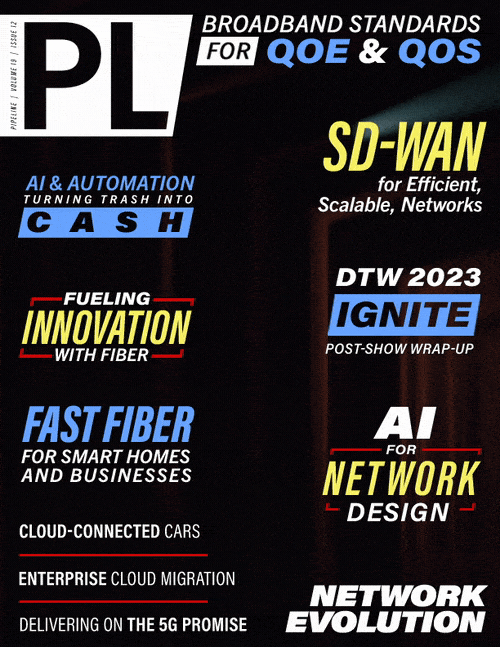The Key Role of Industry Standards
in Services-led Broadband
the end users’ requirements. It is only through interoperability—from the cloud all the way to the device—that the door can be opened to new use cases essential in addressing the rising consumer demand and expectations. This presents a great opportunity for service providers to offer premium services such as Wi-Fi management, network security, parental control, and home automation.
Come together - a collaborative broadband ecosystem
Operators know they have a strategic decision to make, to remain a “utility-like” connection-based network operator or to increasingly add new services and intelligent application aware broadband QoE, but how they do that has, until now, remained elusive. This is thanks to the work of industry standards that has provided the broadband industry with new insights, innovations, and holistic solutions to industry challenges.
For example, the demand for better network services has presented operators with the opportunity to leverage end-user network gateways such as Wi-Fi routers as a platform to unlock a myriad of third-party applications and services. These end-user gateways often serve as the central point for connectivity and network security inside the home.
The exploitable functionality of an additional app-like service layer right at the edge of the network will allow more control and better resilience for all the players in the ecosystem, as well as improving choice and the overall experience for customers. This paves the way to what many could see as the broadband service provider’s own “dynamic app store”—driving any additional services to be uniquely stored on the subscriber’s broadband gateway and separated into individual secure software containers.
By leveraging a centralized internet gateway device or other CPE, service providers can effectively deploy, activate, and manage third-party applications. This includes parental controls, private homeworking, Wi-Fi analytics, smart home functions, or any third-party entertainment and gaming services and security solutions for consumers. Service providers can differentiate and scale their business models accordingly to provide a more customizable offering to each subscriber. This will allow the industry to cater to multiple market segments, such as teleworkers, e-health, security, home automation, and AR and VR.
App-enabled services gateways could, for example, monitor and troubleshoot regimens that support unloading bad applications and isolating bad network devices to protect the end-user when needed. These innovative gateways will be hardened against cyber-attacks, be able to operate over a broader range of environmental conditions, and be robust to changes in technology and equipment failures by upgrading and migrating customer applications and data on-demand. Expansion and operation with all networked devices to extend connectivity and support IoT services is also enabled through the new gateways.
Transitioning from connectivity-driven
The home has become a “technology hub” with an array of devices for all different kinds of uses. It is the responsibility of the operator to unlock the full potential of these devices and provide the end customer with a seamless experience. Operators have long realized that the broadband industry has outgrown speed and connectivity, shifting to a services-led model to accommodate for the new and colourful ecosystem of technologies available.
Standards Development Organizations (SDOs) have pinpointed that there is a clear need for agile network service delivery from proof of concept to real-world deployments, monetization and differentiation of services, and a multi-service broadband network. By leveraging industry standards, operators can derive optimum value from this shift to a services-led approach.
The ongoing work of standards development organisations and open source foundations, including the likes of Broadband Forum, the Connectivity Standards Alliance, RDK, and prpl Foundation, continue to support the shifting focus of the whole broadband ecosystem towards services-led broadband. Notably, Broadband Forum has released technical standards such as TR-369 (USP), TR-181, QED TR-452, and Metric testing TR-471 that are enabling service providers to effectively manage and monitor their subscribers’ CPE and smart homes to provide the best QoE.
An interoperable ecosystem that is aligned with industry standards can unlock revolutionary tools, such as an app-enabled gateway that operators can leverage to adapt to the changing requirements that end users demand within the home.


















